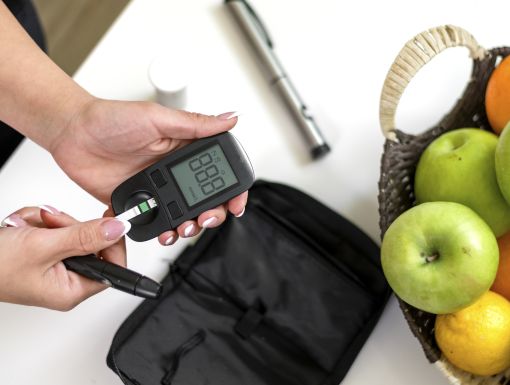
How Do I Know if I Have Prediabetes?
According to Centers for Disease Control and Prevention, 84 million Americans age 18 and older have prediabetes. The staggering statistic translates to 1 out of every 3 adults. So how do you know if you are prediabetic? Let’s first start out with what is diabetes.
What is diabetes?
Diabetes is a chronic medical condition that occurs when your blood sugar is too high. The most common types of diabetes are type 1, type 2, and gestational diabetes.
- Type 1 diabetes occurs when your body does not make insulin, the hormone that helps sugar from food get into your cells to be used for energy. It is typically diagnosed in children and young adults but can occur at any age. People with type 1 diabetes need to take insulin every day to stay alive.
- Type 2 diabetes is the most common type of diabetes. When you have type 2 diabetes, your body does not make insulin well. Anyone can be diagnosed with type 2 diabetes, but it typically occurs in middle-aged and older people.
- Gestational diabetes occurs during pregnancy for some women. Once the baby is born, it typically goes away. However, having gestational diabetes may increase your chances of having type 2 diabetes later in life.
What is prediabetes?
Prediabetes, also known as borderline diabetes, develops before someone is diagnosed with type 2 diabetes. If you are a prediabetic, your sugar levels will be higher than normal, but they are still not in the range to be diagnosed with type 2 diabetes yet.
Risk factors that may contribute to prediabetes:
- Being overweight or obese
- Having an immediate family member with diabetes
- Not being active
- Having polycystic ovary syndrome
- Having high blood pressure or high cholesterol
- A history of gestational diabetes
You won’t always experience signs or symptoms of prediabetes, so it is important that you get regular wellness checks with your family medicine provider. Your provider can tell if you are prediabetic by drawing blood and checking your sugar levels. If your prediabetic status goes unchecked, you can develop type 2 diabetes which can cause kidney disease, heart disease, eye problems, stroke and many other health conditions.
What can I do to reverse my prediabetes diagnosis?
If you are diagnosed with prediabetes, you should take this as a warning sign that you may develop type 2 diabetes if you don’t incorporate lifestyle changes such as diet and exercise habits. So, what can you do to help reverse prediabetes? Simple steps you can take to change things include:
- Increasing your daily physical activity. Incorporate brisk walking or a similar activity into your routine. Aim for 150 minutes of activity a week.
- Cut back on calories. Avoid simple sugars, like fructose, found in processed baked goods or soft drinks. Consume whole foods or complex carbohydrates like beans, grains, and starchy vegetables.
- Losing weight. Incorporating physical activity and diet changes can lead to weight loss. Aim for a five-seven percent weight loss of your starting weight.
Prediabetes or diabetes is not a death sentence. With proper prevention or treatment through diet, exercise, and medication it does not have to cause any complications and can even be reversed! You have the power to potentially change your diagnosis!



